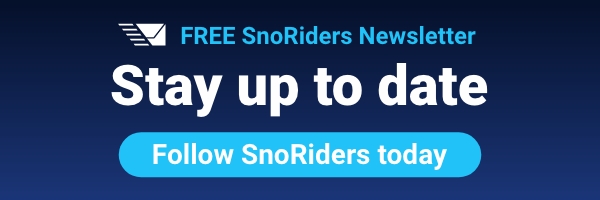Snowmobilers will have an improved resource for making snow safety decisions this winter with the unveiling of new avalanche bulletins by the Canadian Avalanche Centre (CAC).
A new format will make it easier for sledders with differing levels of backcountry experience to get information on avalanche conditions for 12 regions in Western Canada; this is up from seven regions in the past.
Everyone likes colour and pictures
Ian Tomm, executive director for the CAC, said after five years of research and planning with partners that include Parks Canada, the new bulletin format makes use of large icons and colours to communicate avalanche hazard and risk.
“Avalanche information is inherently technical and can be quite complex,” said Tomm, "so moving to an icon-based system, we’re essentially using a picture to tell a thousand words."
He said the new bulletins should be easier to understand for snowmobilers with less avalanche safety training or experience, while additional layers of information are still available for other users.
“Those with less training can get a colour and big icon with some very clear advice, such as today is not a good day to go (into the backcountry)," said Tomm. "People with more training or experience can also access different areas of the forecast and get more technical information.”
Zoom in on where you want to go
Another big improvement this season is the splitting of several large forecast regions into smaller, more focused areas with their own bulletins. Tomm said this had been a topic under discussion for years.
“Some of our bulletin regions are just massive—you could fit entire European countries into just one of our regions,” he said.
The CAC has gone from issuing avalanche bulletins for seven regions to 12 this season, Tomm added; a 13th, White Pass near the Yukon, is coming online in January 2012.
Some popular snowmobiling areas in southeastern B.C. and southwestern Alberta that were previously broken down into two regions now have specific forecasts for the South Rockies, Lizard Range, Purcells and Kootenay Boundary.
“What we are basically moving towards is smaller scale, more regionally based forecasts,” said Tomm. “The travel advice and the level of precision of avalanche conditions will just improve greatly. Really, what we’re trying to do is give people the tools and the information that they require to make safe decisions and have a good time.”
Be an active participant
The CAC will be looking for feedback on the new bulletins this season, and people can email their comments to either here or here.
Tomm said snowmobilers can also find plenty of useful information on avalanche awareness at the CAC website, including a free online course that 30,000 to 40,000 take each year.
In addition, there are free awareness seminars offered throughout the winter, and the CAC provides a listing of companies and organizations that offer the basic two-day avalanche training course, including sessions tailored to sledders. This course should be considered the minimum training for anyone going into the backcountry, Tomm said.







